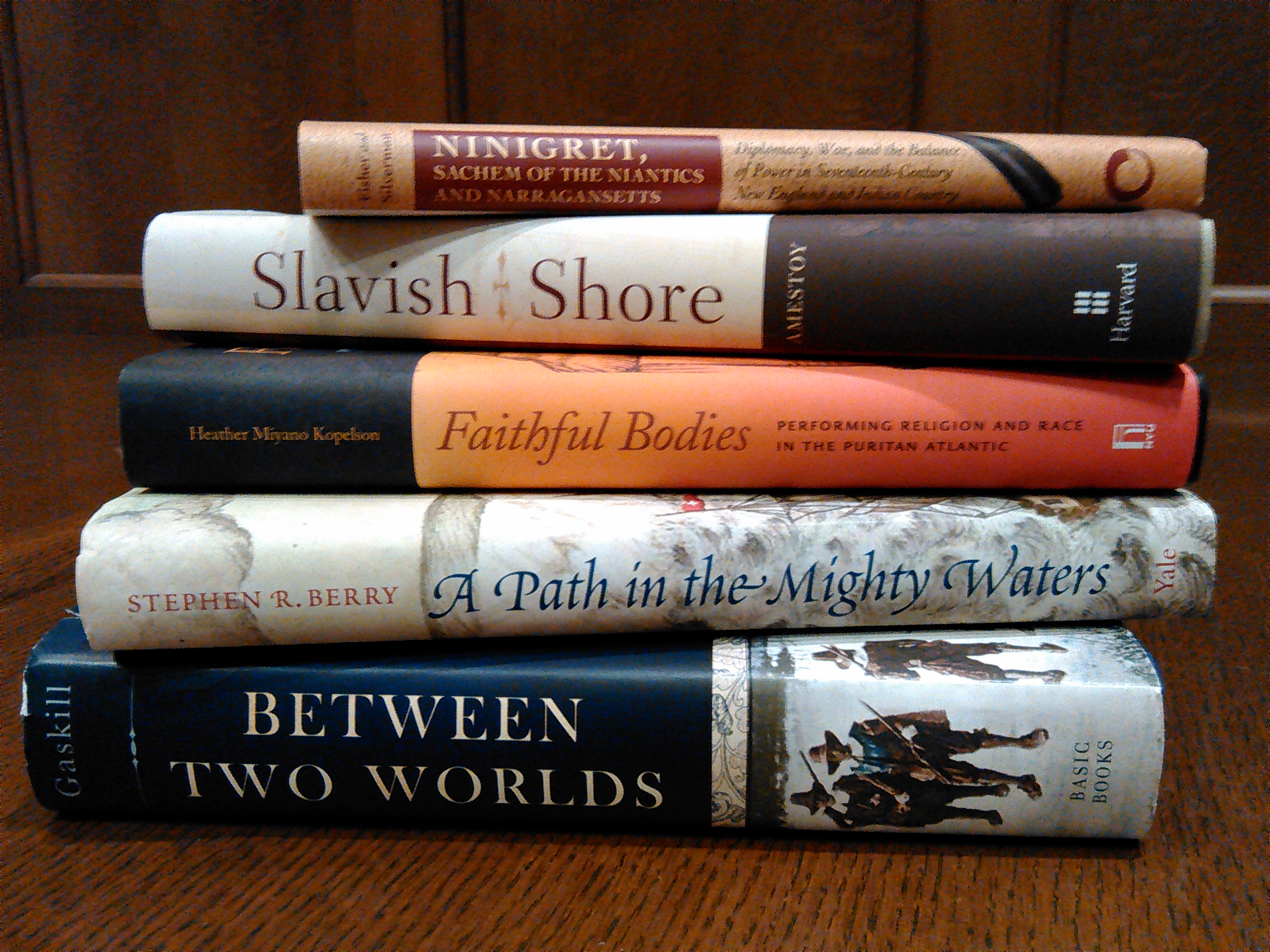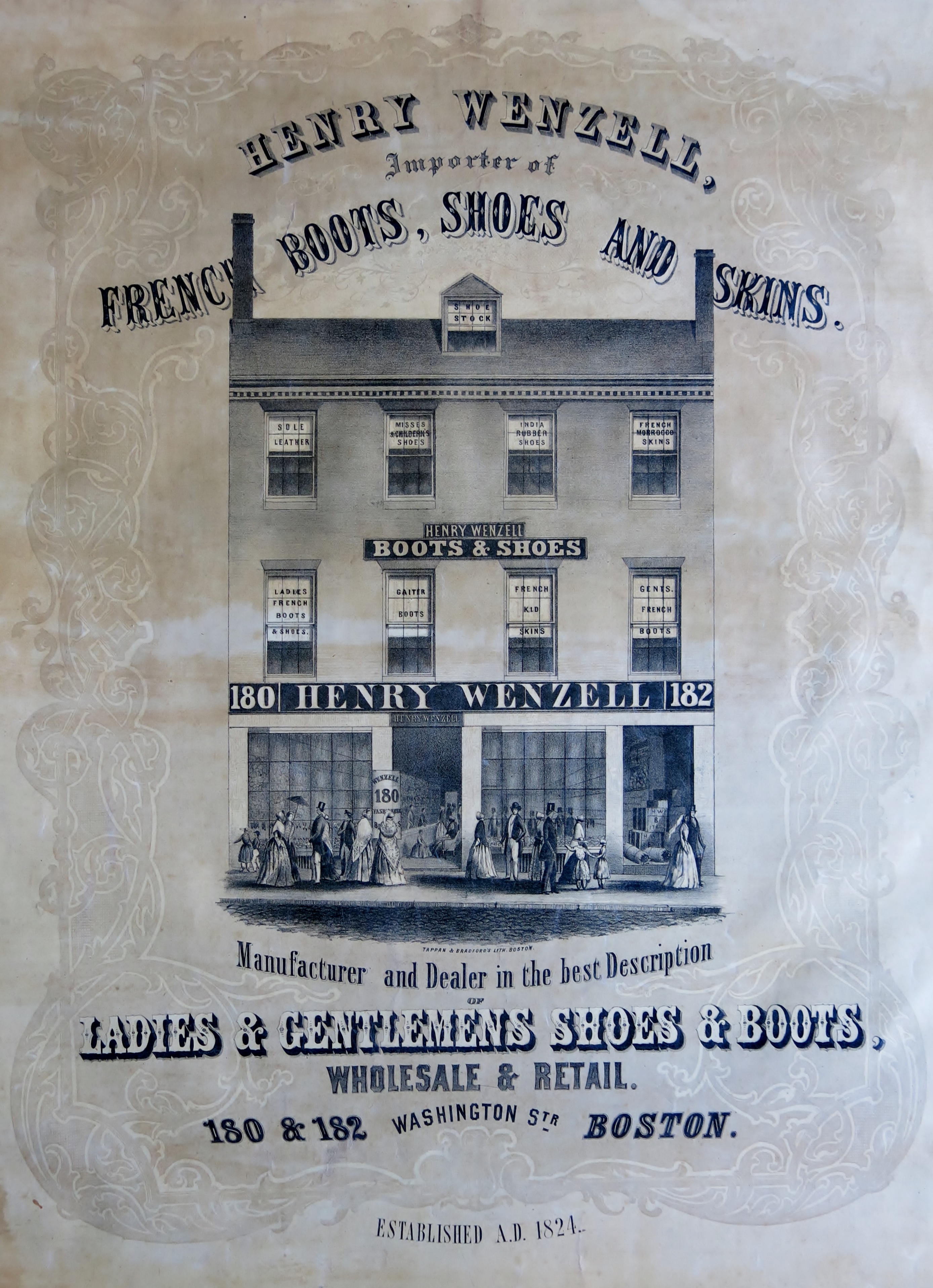By Kittle Evenson, Reader Services
I was all set to do a spooky Halloween post for this installment of the Beehive, but while looking for a broadside advertising a Boston magician, my eye snagged on the word Immortal in the title on a proximal folder. With magic on the mind, who wouldn’t be intrigued?
The document in the folder was “Death of the Immortal Dahlgren,” a poem by M.S.N. memorializing the death of a man described as a “Chieftain of Glory!” the “Hercules of Liberty!” whose “bold heart died to be free / Warm’d by its out-gushing flood.”

M.S.N.’s “Death of the Immortal Dahlgren”
Published in 1864 it seemed clear that this poem described a Civil War soldier, but who was The Immortal Dahlgren?
Halloween and magicians forgotten, I went on the hunt for this mysterious man.
Working backwards, I searched our online catalog ABIGAIL for the M.S.N. poem and found its item record (including Dahlgren’s first name – Ulric), and through that, two other poems and a memorial sermon of the same theme.
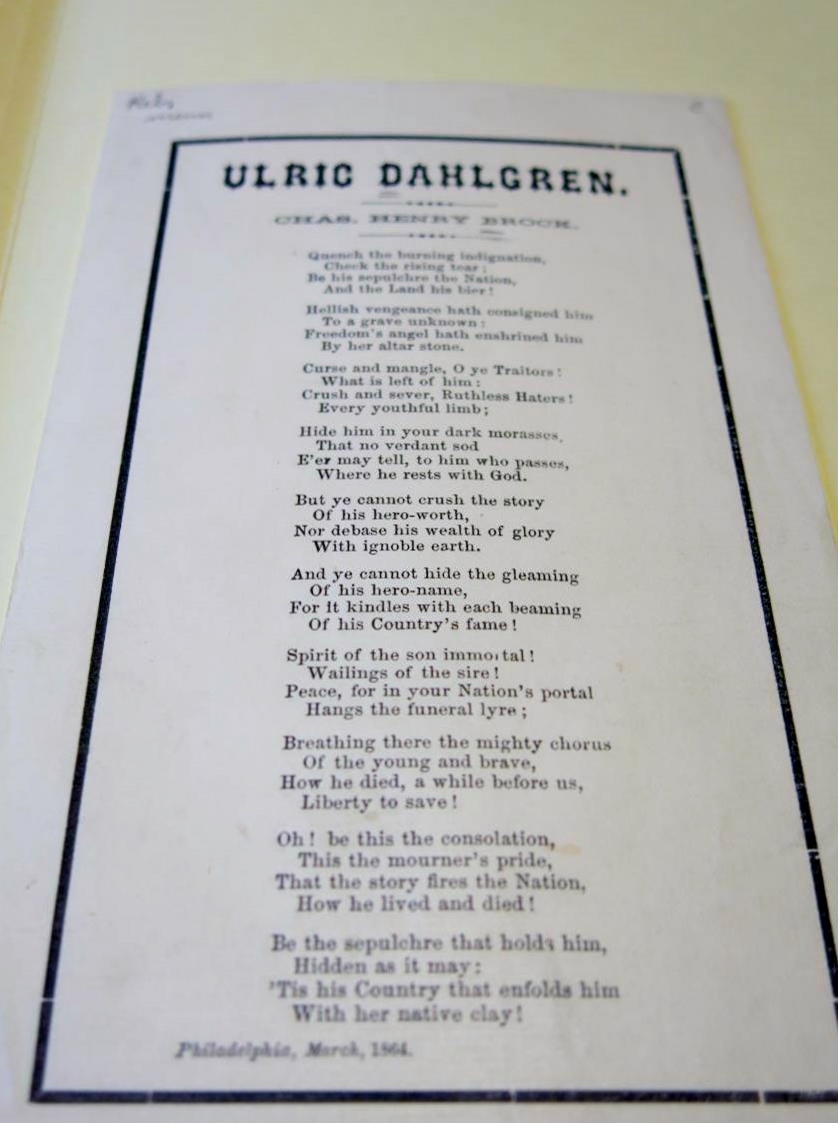
Chas. Henry Brock’s “Ulric Dahlgren”

B.B. French’s “Lines suggested by the death of one of the bravest men this war has brought into the service — Colonel Ulric Dahlgren”

B. Sunderland’s “In memoriam: Colonel Ulric Dahlgren”
Sunderland’s memorial sermon includes copies of the three poems I had already found, with the addition of one by H.T. Tuckerman.
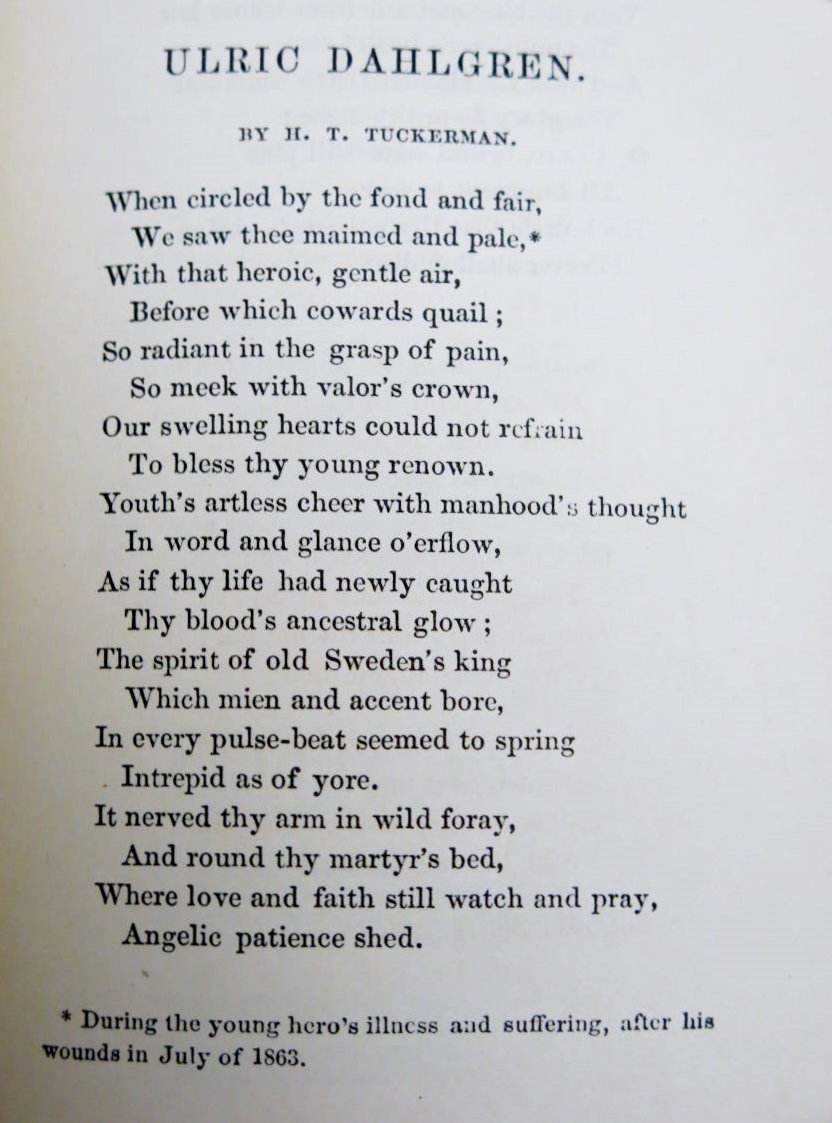
H.T. Tuckerman’s “Ulric Dahlgren”
All the poems describe, in florid prose, Dahlgren’s heroic battle actions, with Tuckerman’s also alluding to Dahlgren’s Swedish heritage and injuries he sustained earlier in his short career.
The picture they paint is emotionally clear, if somewhat lacking in facts. Rev. Sunderland’s sermon helpfully fills in many of the gaps, beginning as it does at birth and expounding Dahlgren’s 22 years over 100 pages. Interestingly, the published copy also includes a letter from Congressman Schuyler Colfax and others requesting Sunderland to publish his oration. The letter reads, in part,
Dear [Rev. Byron Sunderland, D.D.]: We respectfully request that you will furnish for publication a copy of the eloquent and patriotic discourse on the life and death of Col. Dahlgren . . . We wish to see the noble daring and heroic devotion to the cause of his country, which characterized the brief but brilliant career of this young soldier, held up before the youth of our country that they may be stimulated to an honorable emulation of his virtues, and, if need be, to a similar sacrifice of their lives
Not only is Colfax and company hoping to exemplify Dahlgren’s sacrifice for the Union army, but “to honor his memory” in hopes that it “will add to the reproach and shame of all [their] enemies and all who sympathize with them”
The sermon itself draws the listener (or reader) through the life of a young man whose nature was shaped by “domestic, scholastic, and Christian influences,” and whose father’s military example inculcated in him the belief that “if [he dies], what death more glorious than the death of men fighting for their country?”
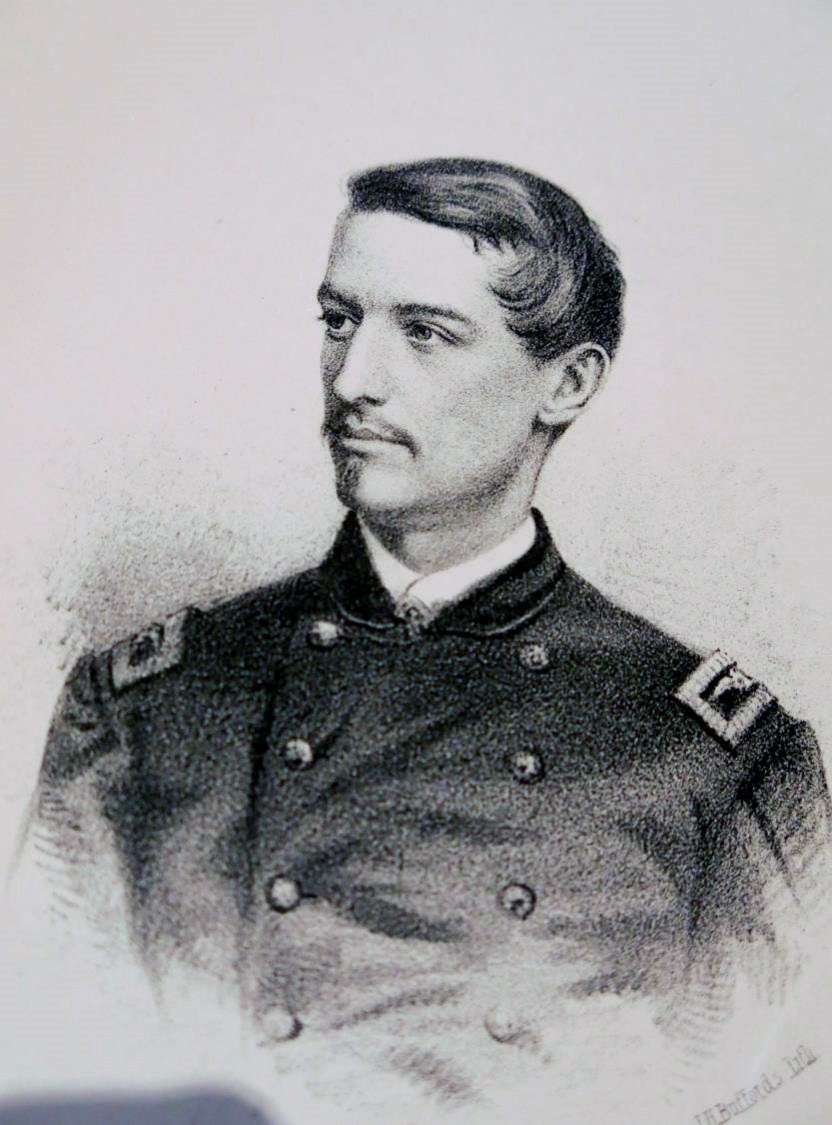
Colonel Ulrich Dahlgren
Highly educated, Dahlgren began his career as a lawyer in his uncle’s practice before following in his father’s military footsteps in 1862. Wounded in July of 1863, Dahlgren lost his right foot but returned to active duty, a newly promoted Colonel, in November of that same year. In late February of 1864, he joined General Kilpatrick’s offensive to free Union soldiers held at the Confederate prison Belle Isle near Richmond, VA. The mission was a failure, and in the early hours of March 2, 1864, just a few miles outside of Richmond, Col. Dahlgren and 500 of his men were ambushed by Confederate forces. Of the fated encounter Sunderland writes
Among the bodies that rolled down together in the dust and darkness, were Ulric Dahlgren and his high-mettled horse, all pierced and shattered with the leaden hail that made them both one heap of swift mortality.
This quiet death, indistinguishable from the thousands of others that occurred around it was publicly honored by the Union leaders as the exemplary sacrifice of a selfless officer. Military and political leaders alike had a vested interest in inspiring commitment and sacrifice in the nation’s youth, and a fierce support on the part of their families. They wove a narrative of Ulric Dahlgren that supported this conviction: a young man from a prominent military family who rose rapidly through the official ranks and gave for his county what Abraham Lincoln called in the Gettysburg Address, “the last full measure of devotion.”
The Massachusetts Historical Society holds a wealth of manuscript materials pertaining to the American Civil War, including firsthand accounts, military records, and photographs. Many collections and items have been digitized for projects associated with the 150th anniversary of the War, and still others are available for viewing on-site at the MHS library. Researchers interested in the Ulric Dahlgren memorials or any of our other collections are encouraged to stop by during any of our open hours.





